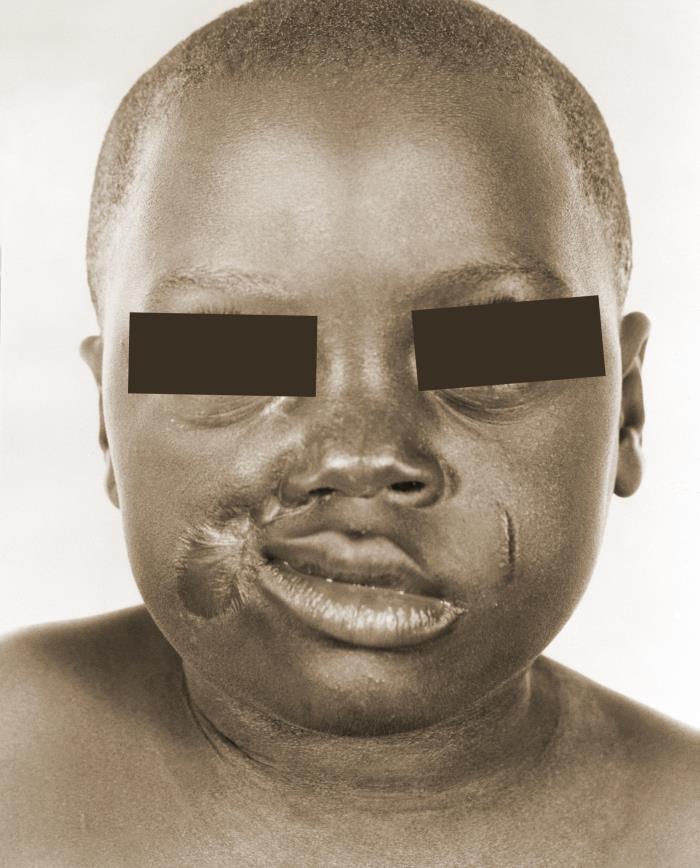By News Desk @bactiman63
Noma (from the Greek: “to devour”), aka cancrum oris is an orofacial gangrene, mainly occurring in malnourished children debilitated by disease and living in the developing world, particularly sub-Saharan Africa.

The mortality of noma is high (90 percent in the absence of treatment) and the survivors harbor such facial deformities that they are often rejected from society and family life.
The etiology of noma is multifactorial with malnutrition as an ever present factor, often in combination with concomitant diseases, such as measles, malaria, and human immunodeficiency virus (HIV), and poor oral hygiene.
The pathogenesis is a fast-spreading, noncontagious gangrenous infection occurring in the face, often preceded by acute necrotizing gingivitis, and stomatitis. Rare microbiological studies suggest an opportunistic infection caused by an imbalance in normal intraoral microorganisms.
Because noma is so neglected, there is little research into the disease and it is not known how many people have it globally. In 1998, the World Health Organization (WHO) estimated that 140,000 new cases of noma occur each year, and that 770,000 patients were living with noma sequelae.
On February 11, the International Society for Neglected Tropical Diseases (ISNTD) will be hosting an online conference to raise the profile of the neglected disease entitled, Noma, a disease that shouldn’t exist anymore.
To register for the conference, visit the website HERE
Cholera outbreak claims 20 lives in Nigerian Delta state
Kenya reports anthrax outbreak in Sotik
Nigeria reports 2 Lassa fever deaths in first week of 2021
Plague in the Democratic Republic of the Congo: Nearly 300 cases in Ituri since August
CDC travel notice for Mauritania due to Rift Valley Fever outbreak


